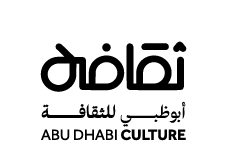Pearl diving in the United Arab Emirates
The Arabian Gulf waters provided an ideal environment for pearling because the oyster beds were shallow enough for divers to reach without the use of breathing gear
The diver was the focus of activity on the boat, with an entire support team to assist him. The main pearling season in the United Arab Emirates was called
Ghous Al-Kabir (‘the big dive’) and took place between 1 June and 30 September. The weather, although hot, was generally clear and calm, providing ideal diving conditions. Smaller one-month seasons took place in October and November.
On the first day, crews would be sent off with a ceremony called
hiraat (‘oyster bed’), that took place on the beach. The crews would depart with their families and community bidding them farewell from the edge of the beach. The most senior
sardal – captain of the fleet – would then officially announce the start of the season.
On the last day of Ghous Al Kabir, a cannon would be fired from the shore as a sign of the imminent return of the divers, and this was a signal for families to prepare for their arrival. People would festoon their houses with cloth flags called
bayraq or
bandira, and prepare special food, including sweets, juices and nuts.
As the pearling vessels beached on the sand, the crews would then receive songs of welcome and would reply with their own songs.
The crew
Depending on the size of the ship, crews could be as many as 30 people. Among the most important members of the crew were:
- Nukhadh: the owner of the boat or a manager on behalf of the owner, who ran the entire pearling operation. He distributed the profits of each season to the crew members.
- Sardal: the captain of the fleet, who was an expert navigator and knew the best hiraat (oyster bed) locations.
- Divers: these men performed the most difficult work, working in dangerous conditions, diving all day for oysters.
- Seib: the man in charge of the ropes used to lower divers to the oyster beds and then pull them up when they were ready to surface.
- Tabbab: boys aged 10-14 years old, often the sons of crew members, who would help the seib in pulling up the divers.
- Ridha: young boys who served food and tea to the divers and helped to open the oyster shells.
- Naham: a man with a beautiful voice, who provided the entertainment during the long months at sea, with songs and poetry.
Tools
A variety of specialised tools were used aboard the ship. Among them were:
- Dean: this woven bag was worn around the neck of divers and used to hold the oysters collected.
- Zubail: this rope was tied to the stone weight that was attached to the diver’s leg, allowing him to sink to the seafloor and stay there while collecting the oysters.
- Yada: this rope was held by the seib. When the diver was ready to come up, he would tug hard on the rope to signal to the seib to pull him up.
- Fettam: this was a clip made of turtle shell or sheep’s bone that helped to close the diver’s nostrils while underwater.











